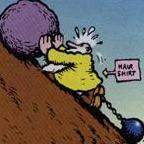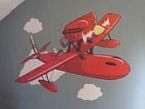Chiteng
Posts: 7666
Joined: 2/20/2001
From: Raleigh,nc,usa
Status: offline

|
[QUOTE]Originally posted by Mr.Frag
[B]pasternakski,
here are the EXACT numbers since you seem to have issues with my simple math.
USA:
Lexington = 36, 36, 15
Yorktown = 36, 36, 15
Enterprise = 36, 36, 15
Hornet = 36, 36, 15
Saratoga = 36, 36, 15
Wasp = 30, 36, 10
6 CVs = 210F, 216D, 85T
Japan:
Akagi = 24, 24, 24
Kaga = 27, 27, 27
Hiryu = 21, 21, 21
Soryu = 21, 21, 21
Shokaku = 24, 24, 24
Zuikaku = 24, 24, 24
Junyo = 17, 17, 17
Hiyo = 17, 17, 17
Ryujo = 22, 0, 14
Shoho = 18, 0, 12
Zuiho = 18, 0, 12
11 CV/CVL = 233F, 175D, 213T
So, we come once again back to simple math:
USA can place EXACTLY 216 Dive Bombers and 85 Torpedo Bombers against 11 Targets.
Japan can place EXACTLY 175 Dive Bombers and 213 Torpedo Bombers against 6 Targets.
The 210 USA Fighters cancel out the 233 Japan Fighters. USA AA advantage will negate the extra planes Japan has, bringing us right back to EXACTLY what I posted, 300 planes on target by each side. Want some more math lessons?
Now, as I stated, torpedoes are more effective at sinking ships the bombs for obvious reasons. This is somewhat mitigated by the USA use of larger bombs, but as you can see from the EXACT numbers of planes, Japan has a MUCH better chance of sticking multiple torpedoes into your CV then you have of sticking bombs through the deck all the way down to the waterline to cause the same desired goal of letting the water in :D
When you couple this with the higher number of planes concentrated on the target CV due to the USA having less CV's to target, you come to see exactly why UV playes the way it does and start thinking that it is a really good thing that Midway happened, putting all those Torpedo Bombers out of the picture.
It is not until the arrival of the true Fleet CV's that the USA in is a position to flaunt it's fleet at Japan when playing the non-Midway scenarios. It is rather silly to debate the facts as they clearly exist within the game. All you have to do is hit you I key and count for yourself. Scenario 17/19 are exactly the same in this respect except for some additional skilled pilots and a quicker replacement rate on Japan's side. It does not in any way change the above numbers. [/B][/QUOTE]
The question seems to be:
Does it reflect reality?
_____________________________
“It is clear that the individual who persecutes a man, his brother, because he is not of the same opinion, is a monster.”
Voltaire
'For those with faith, no proof is needed. For those without faith, no proof is enough'
French Priest
"Statistic
|
 Printable Version
Printable Version












 New Messages
New Messages No New Messages
No New Messages Hot Topic w/ New Messages
Hot Topic w/ New Messages Hot Topic w/o New Messages
Hot Topic w/o New Messages Locked w/ New Messages
Locked w/ New Messages Locked w/o New Messages
Locked w/o New Messages Post New Thread
Post New Thread